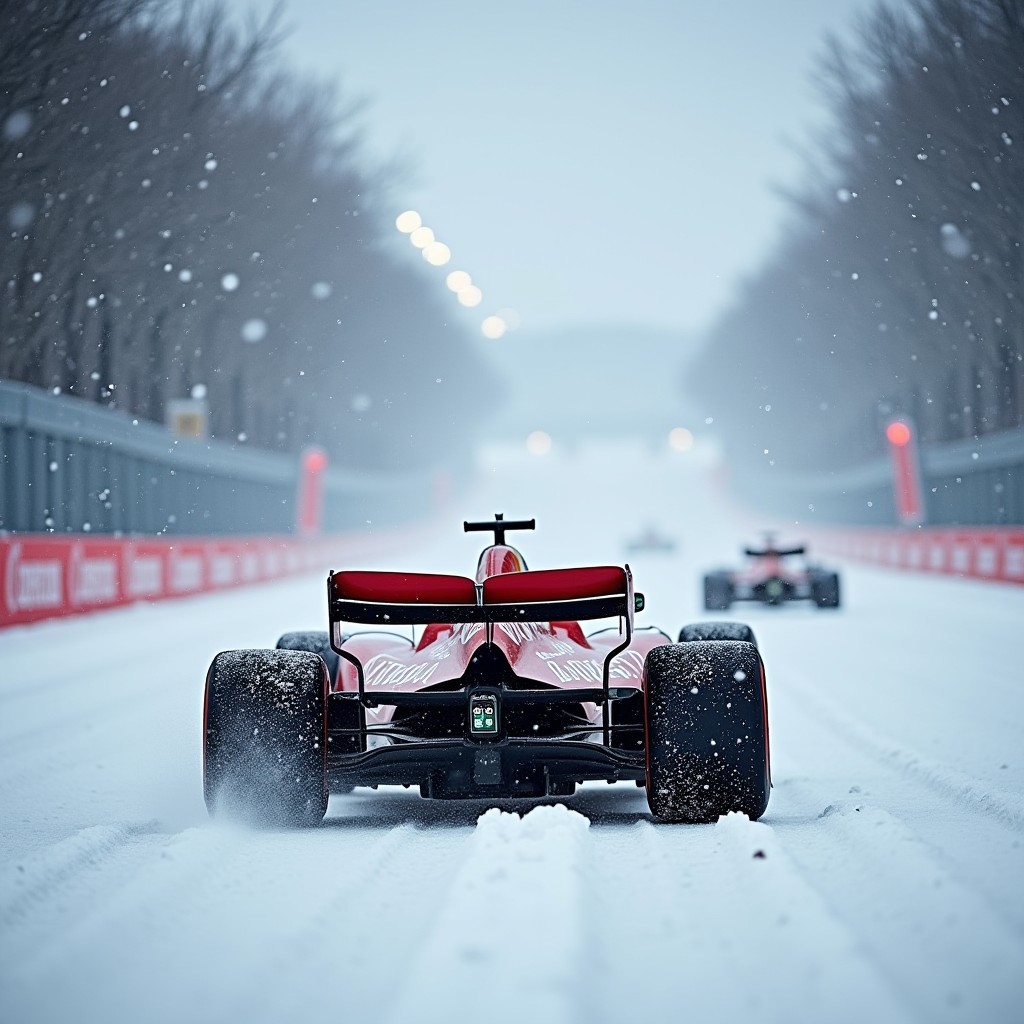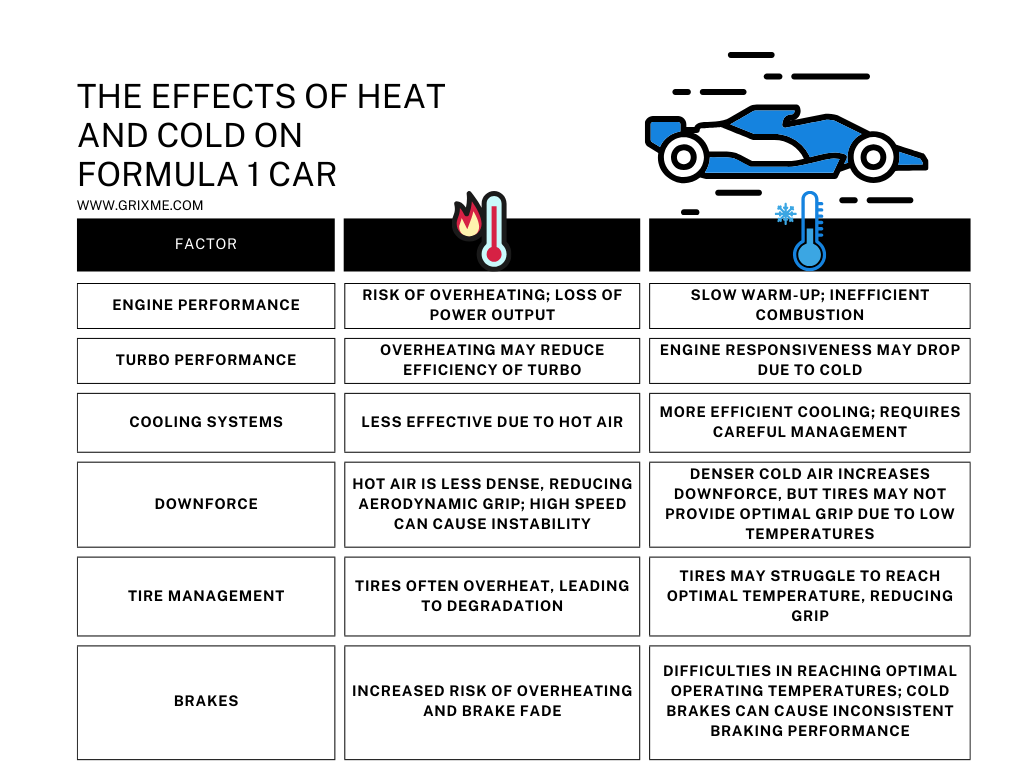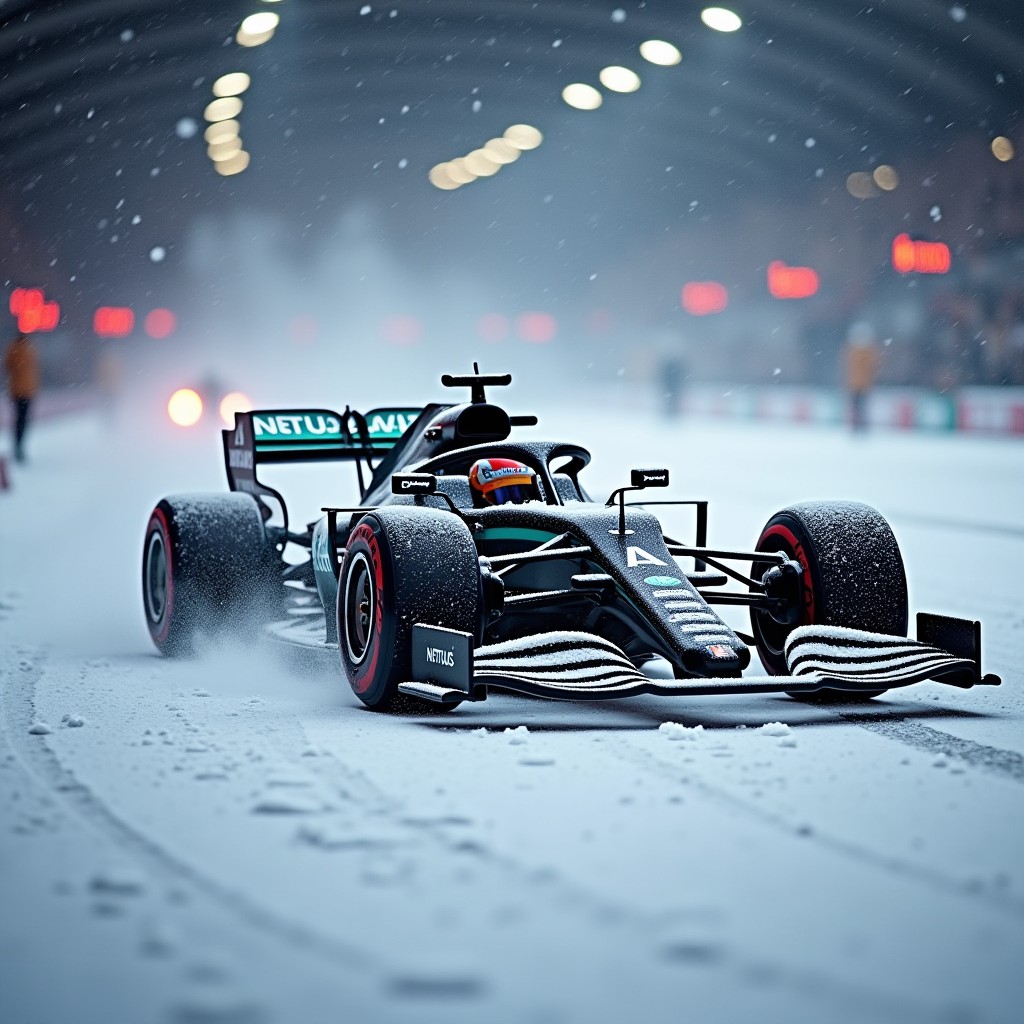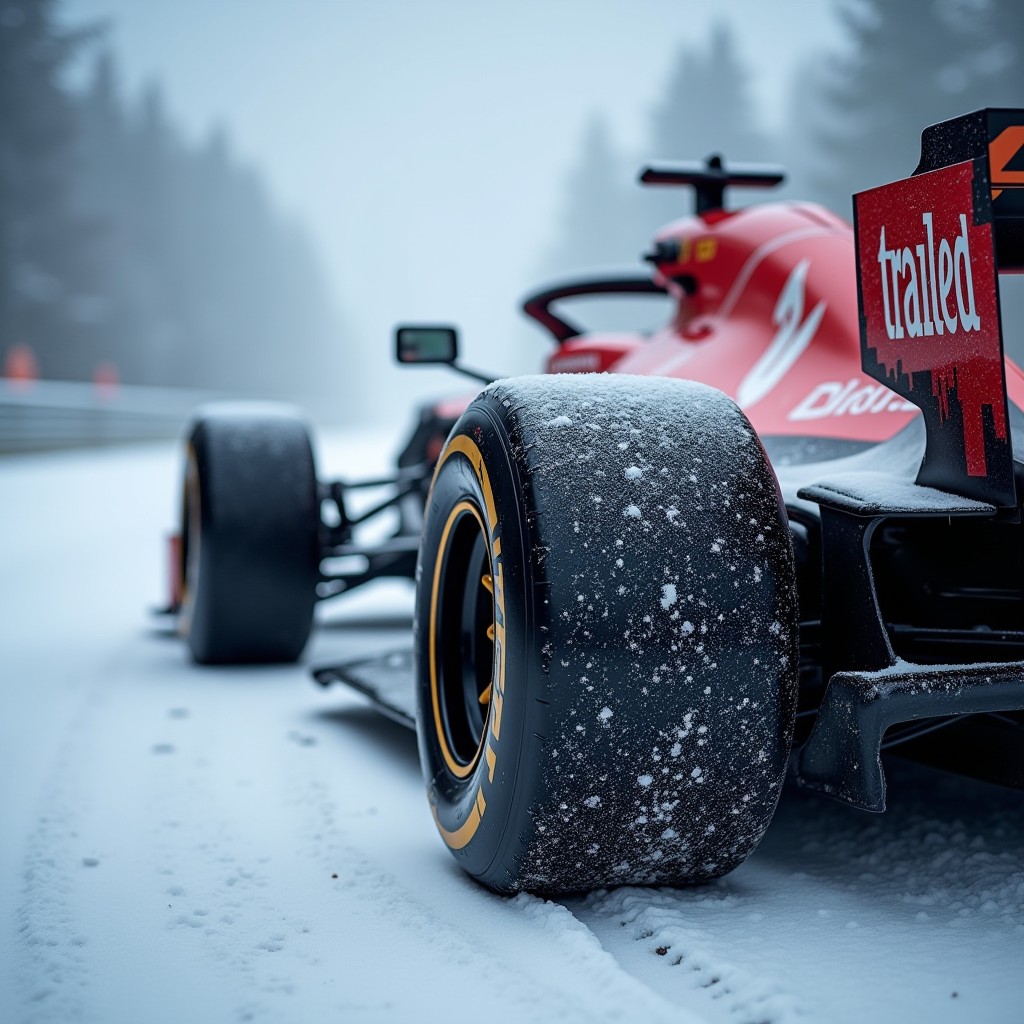What can we wish for when the Formula 1 season is over, but winter is at its peak and Christmas is approaching? It would be fascinating to see an F1 race in the snow because F1 cars are built with cutting-edge technology. They are designed for ‘anything can happen’ racing, whether wind, heat, barometric pressure, or rain. However, while these conditions can affect their performance, cold temperatures present a unique challenge. So, a drop below 10°C (50°F) is enough to cause drivers to struggle with reduced grip and tire performance. But could Formula 1 race still be held in cold weather, in the snow? The idea is intriguing, but here’s the reality.
Core Concept
- Grip: Contact with the racing surface.
- Slicks: Smooth tires designed for maximum grip.
- Brake Fade: The effect when the braking system gets too hot, and the friction between the discs and pads begins to reduce.
From aerodynamics to engine performance, every detail matters in Formula 1. However, to better understand the impact of cold, let’s compare the effects with heat.
From High to Low: How Does Temperature Affect F1 Cars?
Currently, four of the F1 races take place in very hot conditions.
Temperatures at the Bahrain, Abu Dhabi and Singapore Grands Prix can reach 30°C (86°F), while the Saudi Arabian race can see the mercury rise to around 35°C (95°F). And that is just the ambient air degree; the track surface can heat up to 40-55°C (104-131°F).
What Happens to F1 Cars in Hot Conditions?
Yes, racing at 25°C (77°F) can improve some points. However, when temperatures rise above that, the overall vehicle’s performance drops.
TIRES
Formula 1 cars run on slicks optimized for 80°C (176°F). At 200 km/h (125 mph), the tires reach their operating setpoint of 100°C (212°F).
However, when the track surface is hot, the tires can overheat, causing degradation, blistering, and loss of grip.
For example, during the 2020 Spanish Grand Prix, Mercedes driver Valtteri Bottas was the fastest, but ambient air temperatures ranged from 30-32°C (86-90°F), while these at the track reached 45°C (113°F). The lack of grip affected Bottas’ start, ultimately costing him the win.

When it is cold, the situation changes.
When it’s cold, tires last longer due to less wear, but they can’t reach the necessary operating temperature, resulting in a lack of traction. Cold weather can also make the tires brittle, causing degradation and graining.
Therefore, drivers must take extra measures to warm up their tires gradually, carefully accelerating and cornering, as they risk spinning out.
This happened at the 2020 Turkish Grand Prix, where an average temperature of 11°C (51.8°F) made the track extremely slippery.
Lewis Hamilton won the race, stating that adapting to keep the tires in their optimal operating range was key to his victory.
ENGINE
High temperatures lead to overheating in a Formula 1 car’s engine, resulting in a loss of power. Excessive heat restricts airflow to the turbocharger, which requires efficient cooling.
However, components fail or degrade faster, causing the car to retire early from the race.
When it’s hot, drivers often run at lower power outputs to prevent engine failures, which is not Max Verstappen’s approach.
For instance, during the 2021 Italian Grand Prix at 30°C (86°F), Verstappen started from fifth but got stuck in a DRS train, where the airflow was even hotter. As a result, his Red Bull’s engine overheated, and he was forced to withdraw from the race.
Vice and Versa
Conversely, racing in temperatures below 10°C (50°F) means the engine and fluids struggle to reach optimal operating degrees, leading to inefficient combustion.
Cold air is denser, preventing the engine from performing at its peak and leading to its early wear.
During the 2020 Eifel Grand Prix, with temperatures around 9°C (48.2°F), Sebastian Vettel had to make risky maneuvers, resulting in spins and loss of control because his Ferrari didn’t reach optimal temperatures.

DOWNFORCE
Although downforce is an essential area for teams and drivers to experiment with, it is also influenced by temperature.
Hot conditions lead to decreased downforce because hot air is less dense, particularly in high-speed corners.
Conversely, cold weather can increase downforce, but it isn’t effective if the car doesn’t reach its operating degree.
Thus, drivers cannot compete at maximum capacity and race as if on ice, as seen at the 2021 Emilia Romagna Grand Prix, where temperatures hovered around 10°C. Sergio Pérez, Charles Leclerc, Max Verstappen, and Lewis Hamilton struggled with a lack of downforce, affecting their competitiveness.
BRAKES
High ambient and track temperatures heat the brakes of F1 cars. While carbon brake materials are designed to operate at hot conditions, exceeding optimal ranges leads to brake fade, reducing braking performance.
So, the divers face longer stopping distances and decreased confidence in their braking stability.
Think about it, Max Verstappen experienced a brake fire due to overheating during a practice session for the 2022 Miami Grand Prix.
However, cold conditions create a double problem for brakes.
Insufficient heating reduces braking force, as cold brakes don’t provide an efficient grip between the pads and discs.
Cold weather increases brake wear until they reach optimal temperatures, putting additional stress on the entire system.
Thus, in the 2023 Las Vegas Grand Prix, where temperatures dropped to 9°C (48.2°F), drivers had to ensure their brakes worked properly without overloading them, avoiding common lock-ups during intense braking at Turn 14.
As you can see, the most comfortable ambient temperature for Formula 1 cars is around 20°C (68°F), while the airflow at the track must be at least 10°C higher than ambient.

When It Snows
Although no official Formula 1 Grand Prix has ever occurred in snow, the last notable instance happened during the 2005 Silverstone pre-season test when Fernando Alonso encountered a flurry of snowfall while on track.
Remarkably, he demonstrated impressive control in challenging conditions.
However, the current generation of F1 cars operates under different constraints.
Since the switch to hybrid power units in 2012, the vehicles rely significantly on electric power, which affects their handling and responsiveness in extreme conditions.
What happens when the mercury drops under +10°C (50°F)?
Racing becomes extremely dangerous as the mercury drops.
Drivers can lose control of their cars, leading to mistakes and incidents.
The lower the temperature, the less effective the vehicles become.
Cold temperatures also decrease driver comfort.
A cold cockpit makes it challenging for drivers to maintain peak focus and physical handling, increasing fatigue as they work harder to control the car under low tire temperatures, reduced grip, and slower reaction times.

Is There Any Chance to Hold an F1 Race in Snow?
What would an F1 race in snow entail? For snow to fall, temperatures must be around 32°F (0°C). However, as mentioned earlier, F1 cars cannot race effectively at temperatures below +10°C (50°F).
While the idea is thrilling, snow presents insurmountable challenges.
Therefore, to hold a Formula 1 race in snow, certain conditions would need to be met:
- Automatic Heating Systems: The track surface would require an automatic heating system to help maintain the necessary tire temperatures.
- Indoor Races: Hosting F1 races indoors could keep temperatures above 0°C. However, F1 cars need optimal air and surface temperatures for performance.
Moreover, providing heating for tracks over 5 kilometers long poses significant financial challenges.
On the other hand, even if these conditions are met, it doesn’t guarantee the F1 race in snow will be exciting one. Unfamiliar and challenging conditions could lead drivers to struggle with their cars rather than compete against each other, potentially resulting in a boring race.
This is why Formula 1 currently rejects racing in the snow—it is dangerous, costly, and requires a different approach.
Will we see F1 snow racing in the future?
It’s unlikely soon.
However, with advancements in technology, who knows? Perhaps one day, the world of Formula 1 could embrace snow racing, as it remains one of the most lucrative and innovative sports globally.



